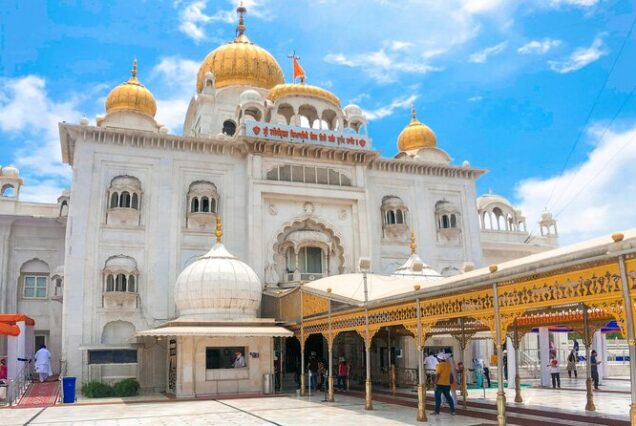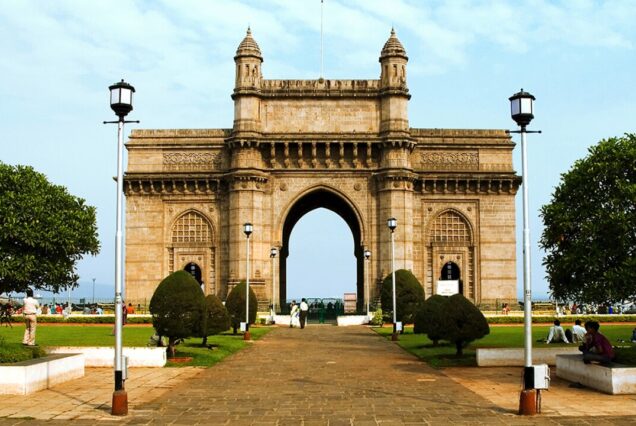Delhi Day Trip
DELHI:
India’s capital city India’s most populated city is Delhi. It is the nation’s second-most populous city. With a population of almost 22 million, the city occupies an area of 1484 km. Delhi is located beside the Yamuna River. The states of Uttar Pradesh and Haryana abut the city. The biggest commercial hub in India’s north is the city of Delhi. The long history of this location and its significant status as India’s capital have shaped its culture.
With its lengthy history as the seat of multiple empires, Delhi has played a significant role as India’s political hub. The beginning of the Delhi Sultanate in the 12th century is where most histories of Delhi start. Since then, Delhi has served as the hub of numerous strong kingdoms and empires, making it one of the world’s oldest capital cities and capitals with the longest history. It is said to have been constructed, destroyed, and rebuilt numerous times in response to invaders who were successful in invading the Indian subcontinent. Delhi’s legacy is mostly Hindu and Islamic, having been ruled by the Islamic faith for over seven centuries. However, Lutyens’ Delhi features extensive British-era architecture, which dates back to the British reign in India.
OLD AND NEW DELHI
Main sightseeing points:
IN OLD DELHI: Jama Masjid, Red Fort, Chandni Chowk.
IN NEW DELHI: India Gate, Rastrapati Bhawan, Humuyuns Tomb, Qutub Minar.
Take a private day trip to Delhi and see it at your own pace. You will have your own local guide and travel in a private air-conditioned vehicle. You can customize your schedule to fit your requirements and interests, and your guide will help you arrange your day in Delhi. Vacationer India Tour provides affordable one-day tours and full-day sightseeing packages for Delhi, complete with a professional tour guide and driver.
ITINERARY: In the morning we will pick you from your hotel or airport in Delhi and then proceed for sightseeing tour of OLD and NEW DELHI.
In the evening drive pass to India Gate.
Drop you off at the airport or hotel in Delhi in the evening.
Tour Plan
Red Fort: Constructed during the era of Mughal emperor Shah Jahan, this magnificent red sandstone structure is where the Indian Prime Minister delivers the country's Independence Day speech each year. The Red Fort has several noteworthy attractions, including the Diwan-e-Khas Diwan-e-am, the armament museum, and the sound and light display.
Note: Red Fort closed every Monday.
Raj Ghat: Set amidst a verdant park, Raj Ghat is the tribute to Mahatma Gandhi, the Father of the Nation. Gandhi's final words, "Hey Ram," are written in gold letters on his memorial. The Gandhi Memorial Museum and Gandhi Smriti Museum are the two Gandhi museums located on the grounds. If you would like to spend more time here, there are more locations, such as Vijay Ghat in Delhi, which is the memorial to Lal Bahadur Shastri, the country's second prime minister. He was a legendary independence fighter who was friends with Jawaharlal Nehru and Mahatma Gandhi. And Shaktiki sthal, Shanti Van
India Gate: Located in the heart of Delhi on Rajpath, this 42-meter-tall arch was created by Edwin Lutyens as a monument to the Indian soldiers who lost their lives fighting in World War I. On the arch, their names are etched. In commemoration of the unidentified soldier, the eternal flame known as the Amar Jawan Jyoti burns beneath the arch's cover. The arch is flanked by verdant lawns, fountains, and water features, creating an evergreen picnic area right in the middle of central Delhi.
DRIVE PAST:- Parliament House and President House
Lunch: At the Indian restaurant that is highly recommended.
Humayun's Tomb: Gardens, fountains, and water were all beloved by the Mughals. Haji Begum, the emperor's mourning widow, constructed Humayun's Tomb, the earliest fully realized example of Mughal architecture in India, in 1565 AD. Built with red sandstone and embellished, it symbolizes the start of a new, elaborate stylistic tradition that led to the construction of the Taj Mahal in Agra. The Persian practice of adorning buildings with colorful tiles is noticeably broken in Humayun's Tomb, which was designed by Mirza Ghyas. Situated inside an expansive square garden, shielded by tall walls and featuring entrances to the west and south, the tomb is a square tower topped by an exquisite marble dome. The base of the terrace is 140 feet away from the dome, and
Qutub Minar: This 72.5-meter-tall pillar, constructed in 1199 A.D. during Sultan Qutub-ud-din Aibak's reign, is a representation of the Delhi Sultanate. The remnants of Kila Ri Pithora, Prithviraj Chauhan's fort, and an incredible, still-unrusted iron pillar from the Gupta era are also visible close by.
The Lotus Temple: The Lotus Temple is a Baha'i house of worship that was finished in 1986 and is situated in New Delhi, India. It is known for being shaped like a flower and is the Mother Temple of the Indian subcontinent. It has grown to be a popular tourist destination in the city. Numerous architectural honors and hundreds of newspaper and magazine stories have highlighted the Lotus Temple.













